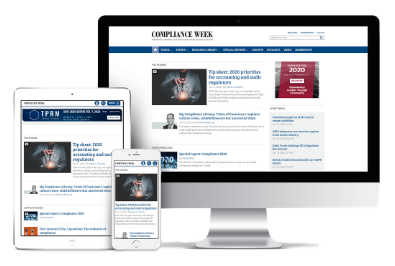When incorrectly managed, correspondent banking relationships can present considerable financial crime risks. With recent high-profile failings seeing many international banks scale back such relationships, a webinar held in March by the International Compliance Association (ICA) looked at how they can be managed successfully.
Hosted by ICA Vice President Pekka Dare, the webinar included panelists Luma Zitani, senior manager at Accenture; Julia Chin, head of compliance at Hugo Save; and Tyrone Griffiths, managing director at FinCrime Protection Limited.
The webinar’s global audience left with four key takeaways.
- A risk-based approach doesn’t mean exiting all relationships in a country or sector.
- Ongoing relationship management makes annual reviews much easier.
- Technology is important, but you still need the best people in place for monitoring.
- Communication and openness will help foster closer relationships.
Below is a summary of responses from the question-and-answer portion of the webcast.
Q. Is perceived increase in derisking linked to the rise in compliance costs in maintaining these relationships?
A. Zitani began answering this by saying it is a respondent’s responsibility to manage the cost of maintaining multiple relationships with correspondent banks. This economic calculation is important: weighing up the cost vs. fee generation can mean it’s not viable to maintain many relationships. This includes time and effort, which smaller organizations often don’t possess. Larger organizations have the same issue, and it’s wise to remember it’s not just about the financial cost. A smaller but higher quality number of relationships to maintain might be the best option.
The International Compliance Association (ICA) is a professional membership and awarding body. ICA is the leading global provider of professional, certificated qualifications in anti-money laundering; governance, risk, and compliance; and financial crime prevention. ICA members are recognized globally for their commitment to best compliance practice and an enhanced professional reputation. To find out more, visit the ICA website.
Chin agreed with Zitani, stating cost is a major factor when deciding whether to derisk. When we think about compliance cost, we need to consider both the financial crime risk and the financial crime compliance cost; we must strike a balance between risk management, managing the risk itself, and managing compliance risk.
Q. What about the SWIFT know your customer (KYC) registry? How is this beneficial for smaller respondents and the holding of information?
A. The panel agreed the registry is an excellent idea. As SWIFT is the platform through which much of the traffic of these relationships travels, it makes sense that they hold a register of all the parties involved. By having an entry on the continually updated registry, it shows (especially for a smaller respondent) your openness and transparency and how good you are at maintaining your controls. Chin added that as long as the data is up to date, then the registry can save a lot of time, allowing focus on the real part of risk management.
Q. What are some of the challenges in monitoring these ongoing relationships?
A. Technology is a big challenge, and the tools used to monitor relationships simply aren’t as advanced when compared to other modern services. The challenge is in fine-tuning your monitoring to identify unusual traffic, particularly for larger institutions that might be in the middle of a large payment process chain.
The concern is that not every risk is identified. Your correspondent, for example, might claim it doesn’t have any of these riskier relationships, but it might not have the controls to allow it to identify all the relationships that sit with it. This is especially common in smaller and local jurisdictions, and the end result can be an ignorance of who is in the chain.
In contrast to transaction monitoring, where it is possible to complete a KYC check, correspondent banking is a networking game, so your monitoring needs to be looking around those flows across the network and multiple correspondents. But the tools just aren’t there yet.
Chin noted the progress seen in terms of tools and artificial intelligence. However, this comes with a warning—these tools still need fully trained people to monitor and use them. Training, the panelists agreed, is key to successfully monitoring and managing relationships.
Q. Does the panel know what we as fintechs can do to make counterparties happy? Do we just double the number of people doing anti-money laundering (AML) work?
A. Fintechs are deemed to be high risk, so banks are understandably more vigilant when doing business with them. To overcome a bank’s anxiety, managing the relationship with the relationship manager is often more important than any technological solution. When a relationship manager understands a fintech’s business, it increases trust and assurance.
Many large banks are open to working with fintechs and are keen to help them develop their controls and control framework. A willingness to collaborate will always foster stronger relationships.
Q. Can you elaborate on those risks specific to correspondent relationships for digital banks?
A. The fundamentals of AML remain the same—it’s just who the entity is that might change. The environment of the bank and what it does must therefore be understood. One concern is that because fintechs and digital banks are new, do they have the experience and controls around AML? Are they up to the same standards as larger banks? The key is for a correspondent bank to have the controls in place and be able to evidence these.
It is also worth considering the perception digital banks are higher risk due to their younger age. We need to be careful as a lot of them are arms of well-established banks and might be better informed than we think.
From a pure risk profile point of view, the only difference is that digital banks don’t have face-to-face relationships with their clients. However, is that high risk compared to someone walking into the branch when even traditional banks are now offering non-face-to-face relationships? The Wolfsberg Group glossary is a good resource on this issue.
Q. What challenges are we seeing in the correspondent world relating to sanctions?
A. The ongoing war in Ukraine has seen sanctions issued regularly and with ever-changing severity. Griffiths explained that at this moment correspondent banking relationships are extremely vulnerable, with some banks applying a blanket approach to certain areas.
Sanctions concerns are rightfully high, but we must also consider the risk of reputational damage has been magnified during the conflict. Normal banking activities are also being strained due to the complex nature of the sanctions being issued.
Even though sanctions regimes are covering the majority of international and global markets, they are not being issued by the United Nations and so aren’t globally binding. This means that while they do impact global markets, a number of jurisdictions haven’t imposed any sanctions. The challenges are thus in managing the sanctions restrictions of those designated, their connections, and identifying them.
Summary
What emerged from the webinar is how central managing relationships is to correspondent banking. Advances in technology are significant, alongside the need to respond to changing global developments. But without the right people in place, relationships are doomed to fail.
Amid concerns around derisking, and with banks reducing their number of correspondent relationships, a strong risk-based approach should be adopted. Developing excellent relationship managers is also key. By doing so, institutions will be able to maintain and grow relationships throughout the payment process.
This article contains excerpts from the full story by the International Compliance Association. The ICA is a sister company to Compliance Week. Both organizations are under the umbrella of Wilmington plc.











No comments yet